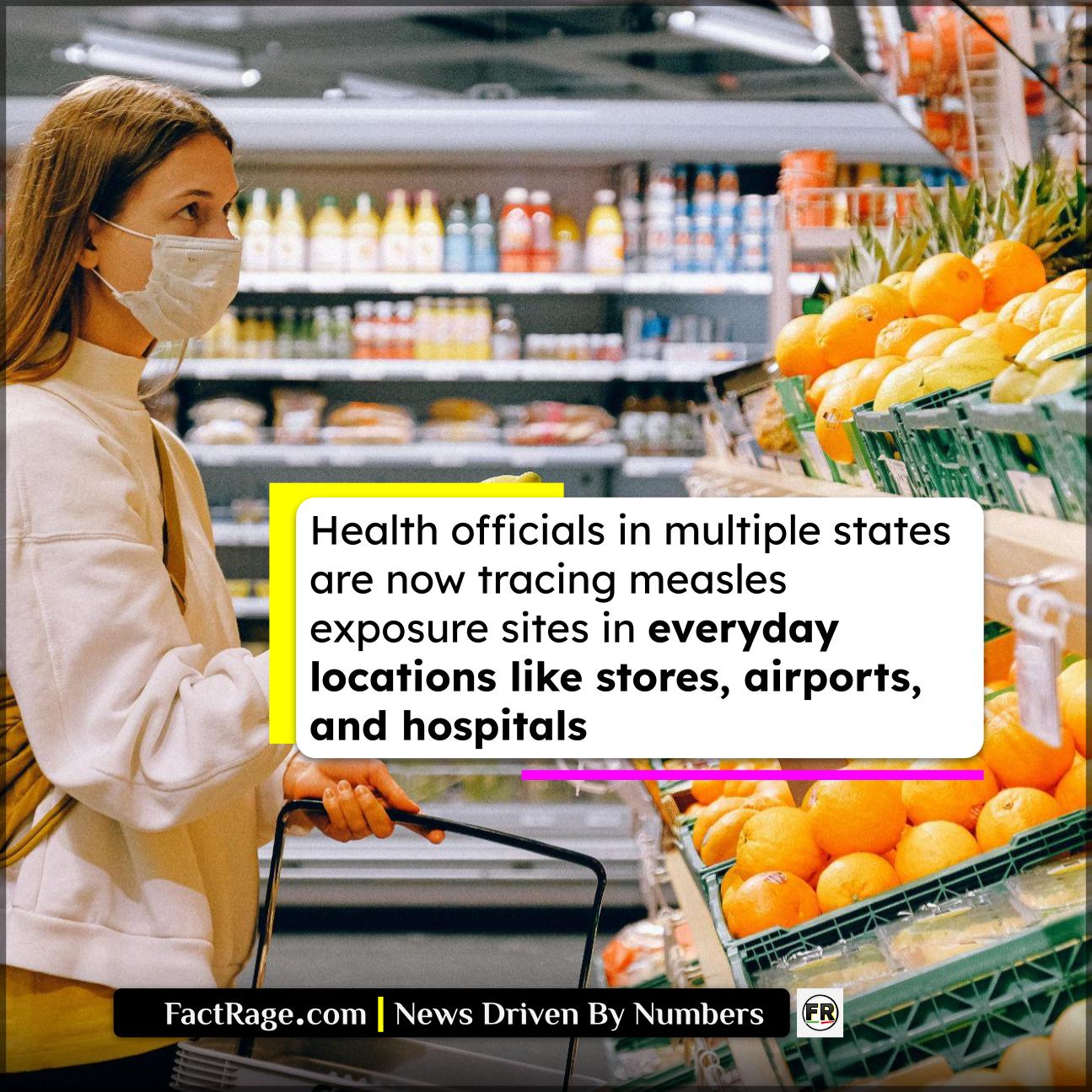FACTRAGE – It often begins with a notice on a health department website or a local news report—a list of familiar places where the public may have been exposed to a highly contagious virus.
- A Michigan Outbreak – Health officials in Grand Traverse County, Michigan, have declared a measles outbreak after identifying three linked cases.
- Unrelated Utah Cases – In Utah, three recent measles cases have been reported in two different counties, with officials stating the infections are not related to each other.
- The National Scope – As of last Thursday, the CDC has reported 1,214 confirmed measles cases across 34 states and the District of Columbia this year.
These local alerts, often focused on a single county or town, are becoming more common. They detail the quiet but urgent work of public health officials trying to get ahead of a virus that spreads invisibly through the air.
A Routine Shopping Trip, A Public Health Alert

In Traverse City, Michigan, the story began to unfold after a third related case of measles was identified on June 23, prompting health officials to officially declare an outbreak. The alert asked residents to consider if they had been at specific locations during specific times. The list included the Chelsea Park West Apartment Complex between June 4 and June 13, and, for a three-hour window on the afternoon of Saturday, June 14, the local Walmart Super Center on Crossing Circle.
Measles spreads through direct contact or simply through the air, and anyone who is not immune is at risk. “Measles is a serious disease, and we want to make sure that our residents and visitors are safe,” said Mike Lahey, the Health Officer at the Grand Traverse County Health Department, in a public statement. He urged those who are not vaccinated to consider doing so, noting it is important to “protect yourself and your family from this vaccine-preventable disease.”
An Unrelated Story, Hundreds of Miles Away
At the same time, a similar story was playing out in Utah, but with a crucial difference: the cases were not connected. On Tuesday, the state’s health department announced two new measles cases in two different parts of the state—one in Utah County and another in the southwest region. These two infections were also unrelated to a third case that had been reported just last Friday in an unvaccinated Utah County resident.
There, too, public health investigators were working to identify where the public might have been exposed. The person whose case was confirmed on Friday had been at Orem’s Timpanogos Regional ER for several hours on June 14 and at the Parkway Health Center the day before.
A Quietly Emerging National Pattern
These local events in Michigan and Utah are not happening in a vacuum. Within the same few days, health officials in Oregon confirmed that state’s first measles case of the year in an unvaccinated adult from Multnomah County who had recently traveled internationally. The exposure sites there included United Airlines flight UA1832 from Chicago to Portland on June 17 and a Safeway grocery store in Lake Oswego on June 22.
In North Carolina, the state’s first case of the year was also just confirmed in a child who was visiting from another country where measles outbreaks have recently been reported. What appear to be isolated local health stories are, in fact, individual data points in a much larger national trend. In total, more than 1,200 cases have been confirmed nationwide this year, with three resulting in death.
An ‘Eliminated’ Disease and a Preventable Risk
The return of measles to American communities is a relatively new phenomenon. The disease was officially declared “eliminated” from the United States over 25 years ago. According to the CDC, that designation could be in peril if the current rate of outbreaks continues for over a year.
The common thread running through the vast majority of these cases is vaccination status. The three individuals infected in Utah were all unvaccinated. The adult in Oregon was also unvaccinated. Nationally, data from a May CDC report showed that 96 percent of individuals with confirmed cases were either unvaccinated or had an unknown vaccination status. As health officials in Oregon stated, vaccination remains the best form of prevention.














